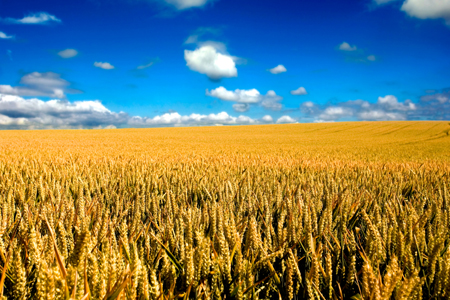 (AgProfessional) – Despite roller-coaster variations in temperatures, an ongoing drought, and a shortage of preferred varieties, most Texas High Plains wheat is in fair to good condition, according to a Texas A&M AgriLife Extension Service expert.
(AgProfessional) – Despite roller-coaster variations in temperatures, an ongoing drought, and a shortage of preferred varieties, most Texas High Plains wheat is in fair to good condition, according to a Texas A&M AgriLife Extension Service expert.
“Late freezes in the spring of 2013 and other weather conditions limited the amount of available seed produced of preferred varieties, particularly AgriLife Extension’s ‘Pick’ varieties,” said Dr. Calvin Trostle, AgriLife Extension agronomist in Lubbock.
“Those Pick varieties were sometimes spread over more acres at a slightly reduced seeding rate,” Trostle said. “But management keys like suitable planting date, irrigation and timely top-dress nitrogen applications in late winter 2014 will help compensate for lack of availability of preferred wheats.”
Though there were some crops other than wheat planted in place of the preferred varieties, by far, most farmers turned to alternative wheat varieties: those shown by AgriLife Extension and Texas A&M AgriLife Research variety trials as possibly not performing as well on irrigated or dryland acres as the Pick varieties, he said.
Winter wheat is a very large and important crop in the Texas High Plains. In the Texas Panhandle region alone, total acreage often exceeds 2.5 million acres, Trostle said.
“A large proportion of the winter wheat is grown solely for grazing or dual-purpose uses–grazing plus grain. But wheat for grain produces the greatest value,” he said.
There was some late-planted wheat, but late-planted wheat can still do well if it has enough warm days to get it up and growing, he said.
“Delayed planted wheat will have very slow emergence in some cases, particularly if they planted after early November,” he said. “I think overall, that most of our grazing wheat is in better shape, because it was planted earlier and was well-established before recent freezing weather. Some late wheat for grain will grow slowly over the winter, but if we have a wet spring, then that all changes for the better very quickly.”
Though some might be concerned about the effect of this year’s unusually cold weather on the wheat crop, Trostle isn’t, he said, at least for wheat grown for grazing.
“If we have 70-degree days, and all of sudden it goes down to 25, that’s hard on anything, plants or animals,” he said. “But remember, wheat is a cool-season crop. It’s adapted to this kind of thing. We could certainly have some modest injury over the winter if it’s excessively cold, but if the tillering is in place, when things warm up in the spring, it comes to life, and sometimes we might forget how maybe it didn’t look very good back there in December and January.”




